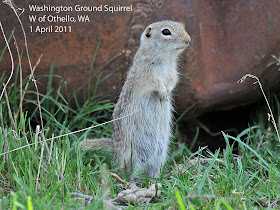It’s late April, and bird migration is in full swing. Among the first birds to arrive are the hole nesters. Some birds make their own holes (primary cavity nesters), but there are others that nest in cavities but cannot excavate them themselves (secondary cavity nesters). The latter are always disadvantaged when it comes to finding a nest cavity, whether an abandoned woodpecker hole or a natural crevice. Basically, there aren’t as many nest sites as there are bird pairs. Even worse, competition is both within and between species for appropriate cavities.
One adaptive strategy in the intense competition for these holes is to be nonmigratory and to defend the nest site all year. It’s probable that the use of their holes for winter roosting has even favored resident status in primary cavity nesters. But interestingly, most of the secondary cavity nesters are migratory. So their best bet is to arrive as early as possible in migration and claim a cavity before anyone else can do so. Because of what must have been strong selection, many of the cavity nesters are among the earliest birds to arrive from the south in spring.
These include Tree (Tachycineta bicolor) and Violet-green (Tachycineta thalassina) Swallows, which arrive in migration in the Pacific Northwest before any of the other swallows. Tree Swallows normally arrive in western Washington in late February, in fact before almost all other migrants. They are competing for tree holes over water, and those are scarce indeed. Violet-greens arrive soon thereafter, looking for tree cavities in forests or niches in cliffs.
Some of these swallows occupy cavities in deserted buildings. That brings up the point that such birds will nest where they can, and human structures, deserted or not, can represent prime real estate if they have any openings into sheltered nest sites.
With our big brains, humans long ago figured out that if cavities were limited, a way to attract hole-nesting birds was to make nest boxes available to them. Thus the well-loved bluebirds have become recipients of so-called Bluebird Trails all over the country. Houses are put out in appropriate habitat at fairly close intervals, usually on fence posts, and they are rapidly accepted by bluebirds (Sialia spp.). Bluebirds and swallows seem always to reach higher breeding densities when provided with nest boxes. Much research on nesting biology has been carried out with the use of these boxes, and widespread declines in bluebird populations have been halted by their use.
There are many other secondary cavity nesters, including Wood Ducks, Buffleheads, goldeneyes, mergansers, kestrels, small owls, Myiarchus flycatchers, some chickadees and nuthatches, flying squirrels, red squirrels, and woodrats. When natural crevices don’t fill the bill, they all depend on the primary excavators, especially woodpeckers. Woodpeckers can be considered keystone species in the forest, as so many species depend on their presence.



















